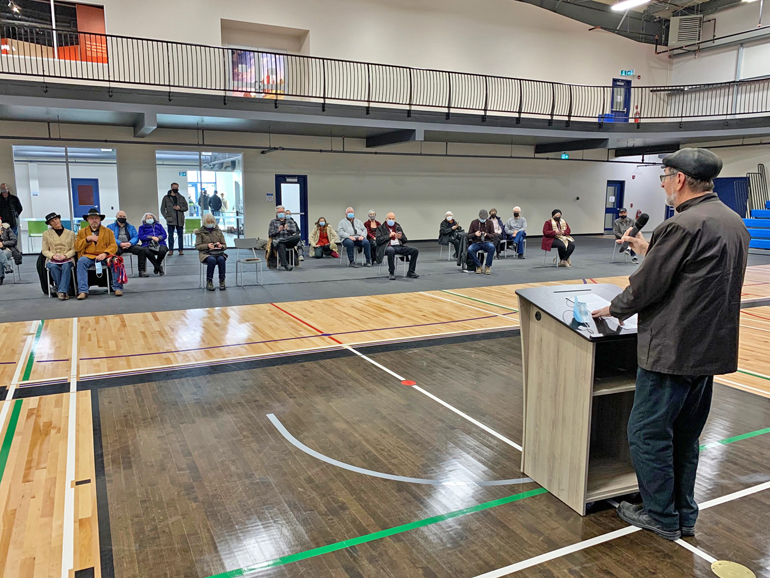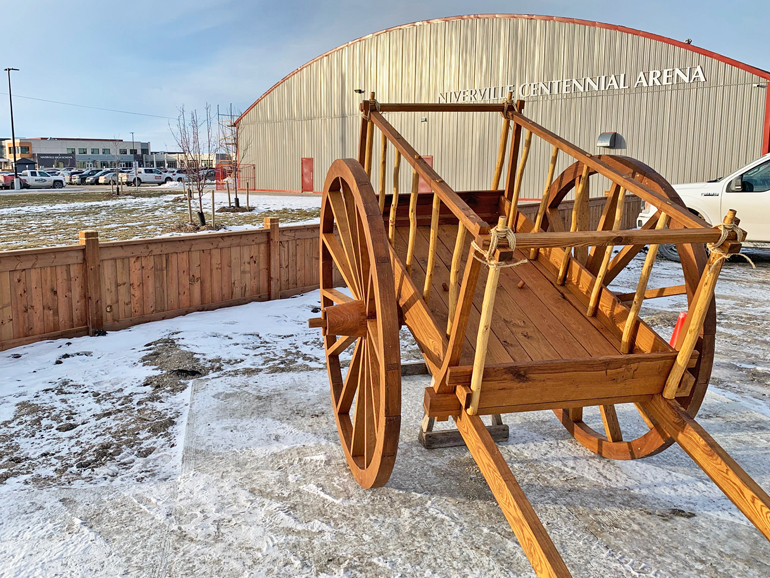On a crisp and sunny Saturday afternoon, a couple of dozen individuals from all walks of life gathered inside the much warmer Niverville Community Resource and Rec Centre Field House.
Ernie Braun, Niverville resident and a member of the Manitoba Mennonite Historical Society explains the reason for the gathering, “It's the attempt of this community to honour the role that the Metis and their carts played in the history of this immediate area.”
Braun continues, ”Niverville is located at the place where the Crow Wing Trail crosses the railway track. And the Crow Wing Trail, of course, was where the Red River carts were used to ferry goods up and down from Fort Garry to St. Paul, MN.”
The historian goes on to say that the railway track was graded in 1874 by Joseph Whitehead who chose to put his staging area right where the railway track and the Crow Wing Trail cross. That way he would actually have a complete supply chain from Fort Gary and connections to every point south of there to the border. That intersection is now near the current town of Niverville.
Braun continues the history lesson, “And then, of course, there's the whole role of the Metis in the arrival of the European settlers because, in the 1870s, the Metis were the go-to people for just about every service that you could imagine for the pioneers in the southeast and in various parts of Manitoba. They had the carts, they had the transportation, they knew the area intimately and they were the ones who carted all the Mennonites’ luggage from the Rat River and the Red River. Carrying the sick, elderly, the children, and all the baggage.” He says, sometimes it would have taken 3 days to transfer all the baggage from one steamer to the Immigration Sheds located 2 miles south of Niverville.
He says, at each point of the immigration to Manitoba process, the Metis and their carts, were instrumental in assisting the European settlers, particularly the Mennonites, and particularly here in Niverville because this was sort of so close to the actual point of entry where Mennonites first stepped on to Treaty 1 land.”
tely tremendous. I mean, it's great to just know about our history, but it's also great to have this symbol serve as a continuous reminder. You know of the history that was and how people interacted and what brought people through this area in this region so, what could be more symbolic of that than such a thing as a Red River cart.”
Mayor Dyck thanked everyone involved in the process of creating this life-size piece of history for his community. And to the generation just learning about the history of Niverville, “We want to continue to be able to teach and to educate. It's important that one generation is not lost to the next generation on the history of the culture of your area. It's very important, and so this will serve as a reminder. Questions can then be asked of parents and grandparents as to what is this and what is this for and that then can be told.”

















